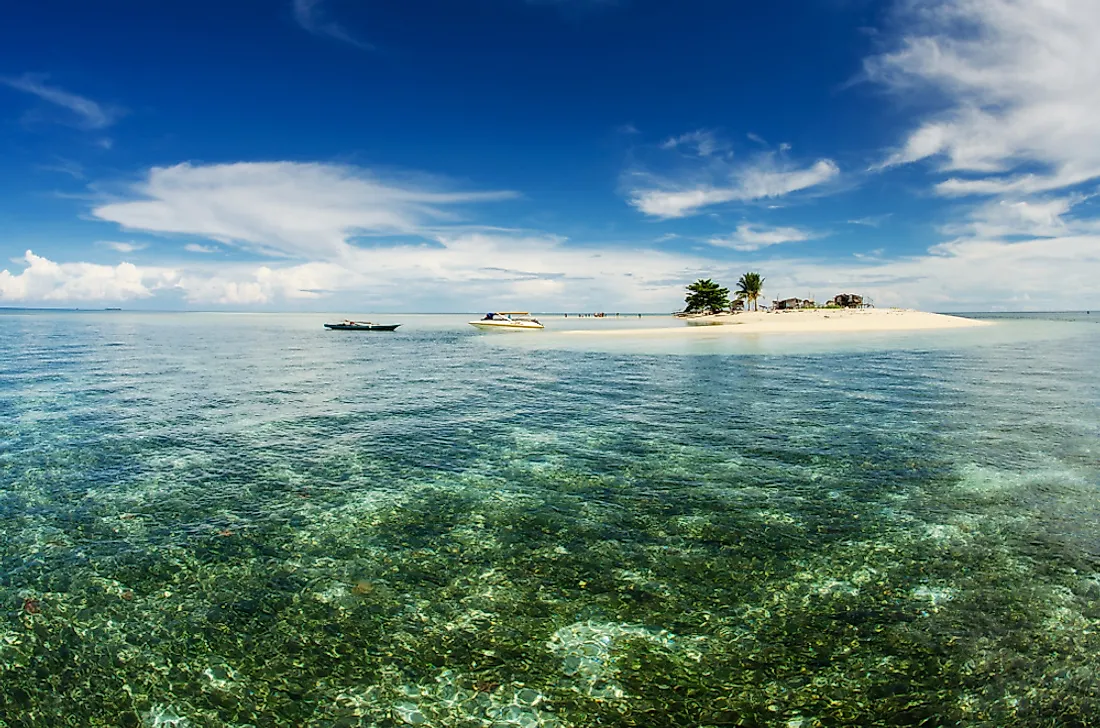Where Is The Sulu Sea?

The Sulu Sea can be found in the southeastern portion of the Asian country of the Philippines and covers an area of 100,000 square miles with a depth of 14,400 feet. This relatively small body of water actually makes up part of the northwestern Pacific Ocean and is bordered by various islands including Borneo (which ranks as the world’s third largest island), Palawan, Mindoro, Busuanga, Negros, Panay, as well as the Sulu Archipelago. The Sulu Sea is also home to several island groups such as the Cagayan Islands, Turtle Islands, and Cuyo Islands.
Marine Life
One of the most interesting features of the Sulu Sea is the presence of various geographic structures including coral atolls and reefs.
Most significant among these naturally formed structures is the Tubbataha Reef which is home to the Tubbataha Reefs Natural Park. This protected area is located in the central portion of the Sulu Sea and in 1993 was afforded the status of becoming a UNESCO World Heritage Site based upon the plethora of marine life found here. Many years later in 2009, the physical boundaries of the park were extended to cover about three times as much area as what was originally designated for the park. Tubbataha Reefs Natural Park includes both a bird as well as a marine sanctuary which are located on two large atolls. The park is also a popular nesting site for local species of turtles and birds such as terns. Other marine animals found at the park include hammerhead sharks, manta rays, clownfish, barracudas, giant kingfish, and moray eels.
Marine Industries
The Sulu Sea is well known for the important role it plays in terms of facilitating commerce and trading between the various local island communities. The fishing industry is also a key element in the economic survival of an array of communities living in this part of the world. Other naturally sourced products found in the Sulu Sea include turtle eggs, shark fins, pearls, and sea cucumbers.
Diving
Each year the lure of taking part in a unique one of a kind recreational activities attracts tourists from all over the globe to the Sulu Sea. Diving is especially popular in areas in which coral reefs are abundant. The harder to reach areas of this body of water are accessible by boat only during the months of March until June. Among the world-class diving spots in the Sulu Sea include Amos Rock, located in the southern portion of the sea, Jessie Beazley Reef, which is predominantly circular in shape, and Basterra Reef, the deepest of all the local diving destinations reaching depths of more than 1,000 fathoms.
Piracy in the Sulu Sea
Throughout its history, the Sulu Sea has been plagued by pirates. For many years the sea was the domain of the Moro, a Muslim people living not only in the Sulu Archipelago but also on the Philippine islands of Mindanao and Palawan. In the mid-1900s a Spanish campaign began with the aim of systemically punishing these marine thieves.
A 2017 news article published in The Manila Bulletin, however, makes it clear that piracy is still a major problem in the Sulu Sea. The report states that many international companies have begun putting their cargo shipping activities on hold in the area and are refusing to allow their supply ships to be chartered to companies operating in the Sulu Sea due to continuing problems and loss of revenue resulting from theft at the hands of local pirates.











